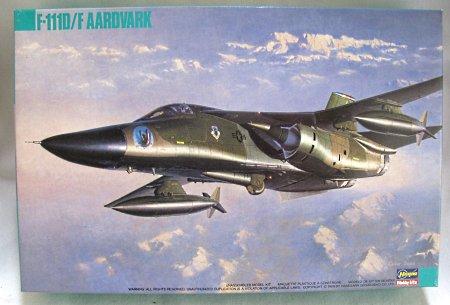It is amazing how really old this series of 72nd scale kits are now from Hasegawa. When the K-series came out in the late 70's mid 80's they were an instant hit, along side with their 48 scale kits they were state of the art. The series of F-111's too me are still the best in any scale. The only criticism they received were the decal consoles and instrument panels. Otherwise despite the parts these kits had, they were not difficult to build. Except for the F-14 which is not an easy kit to build by anyone until Tamiya's recent release. I had intended to do all the F-111's and so far I have only built the Echo, but it has since disappeared on me, and I have no idea what happened to it. I built that kit back in 1993. I found this one at a Hobbyshop in Riverside back in 2002. Been in the stash since. I also have the EF-111 Sparkvark in the stash. So let see what we in the box.
-

The instruction sheet is good in typical Hasegawa directions, in several languages. With color callouts based on the Gunze line of paints. But with FS numbers as well so it will help to substitute with other brands.
I have the Eduard's basic cockpit set, which is more simpler than their normal zoom set, which I don't believe there is one for this kit. As this kit pre-dates when Eduard's started that line. And don't believe Eduards went back to produce a more detailed set. Other than a full interior/exterior set. Verlinden does have a resin/PE set for this which is hard to find and expensive.
Next a set of masks from our old friend Cutting Edge. Remember them, rather controversial company with all kinds of real nice sets in resin and PE. Decal sets as well. Now getting hard to find as well.
The kit itself has about 130 parts in the kit. A lot for a 72nd scale kit but great details. Finely engraved panel lines were the rage when raised panels were the norm on the early Hasegawa first generation kits of the 60's and 70's. And not just Hasegawa. The first 2 sprues have the lower main fuselage intake ramps. The 2nd sprue has the forward fuselage and intake faces. Very nice fine detail.
The 3rd "special sprue" specific for the "F" variant holds the Pave Tack lower fuselage panel to mount it on and the IP panel and coaming for this version.
The clear sprue has the canopy and various lights on the air frame.
My favorite part of the kit is the wings, which can be displayed with fully deployed flaps and slats. Though it will take some work to close them up and the wings swept back. I will build it with the wings fully open with everything down.
Another point and I was one is that these kits were not cheap for a 72nd scale model back in those days. You can buy 2 Monogram 48 scale kits almost 3 for one Hase 72nd scale kit like the F-111. And no weapons were provided on most of them. You had to buy a weapons set sometimes 2 to get a proper load out for your subject. And you know they are still pricey today when you find one. Even on Ebay. This kit provides a pair of drop tanks and Durandel anti runway bombs.
The wheels are excellent for this scale. Nicely done. There are some resin wheels available. But these will be fine for the "F"
The final sprue holds the upper main fuselage section, Landing gear components. And again Hase had great details within the main gear bay. These kits were very good. And still hold their own today.
Now to find some decals, and might just see if a Verlinden set is around. This will be a Desert Storm era F-111F out of Lakenheath. 66 F-111F's operated in Desert Storm.
Thanks for viewing.